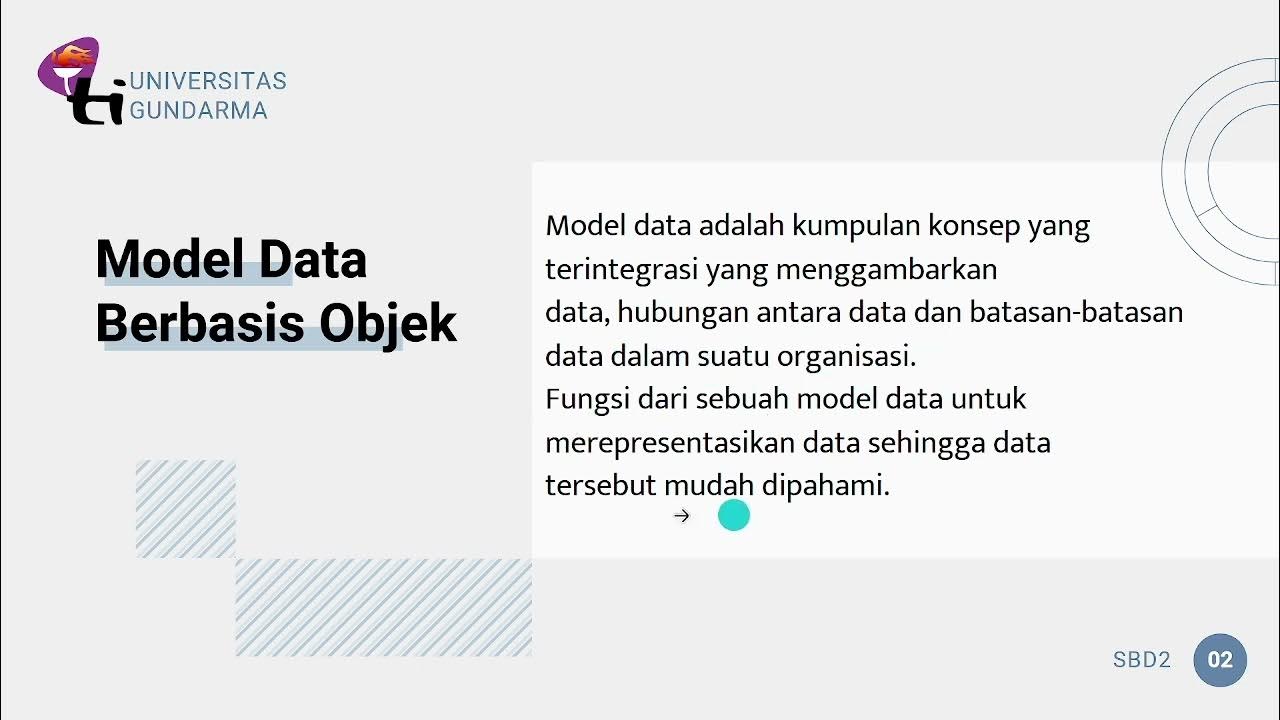MySQL - 00 Apa Itu Database ? - Istilah Penting Seputar Database
Summary
TLDRThis video provides an insightful introduction to databases, covering essential concepts such as tables, records, attributes, and keys. It explains the importance of DBMS (Database Management Systems) in managing and operating databases, with examples like MySQL and PostgreSQL. Key terms like primary keys, foreign keys, and relationships between entities are explained with real-world examples, such as a school database. The video encourages further exploration of these concepts and emphasizes the role of DBMS in organizing and accessing data efficiently.
Takeaways
- 😀 A database (Basis Data) is a collection of information systematically stored in a storage medium for easy access through a program to retrieve data.
- 😀 Databases represent a set of related facts stored together without unnecessary repetition or redundancy to meet various needs.
- 😀 A database consists of objects called tables, where each table represents different types of data. For example, a 'School DB' might have tables for students, teachers, and more.
- 😀 To understand databases, it is essential to learn about DBMS, entities, attributes, records, data values, keys, and relationships.
- 😀 DBMS (Database Management System) is software used to manage a database. Examples of DBMS include MySQL, PostgreSQL, and Oracle.
- 😀 Entities are objects whose existence is distinct from other objects and are represented as tables in a database. Each entity in a database must have a unique name.
- 😀 Attributes are the characteristics or properties of an entity. For instance, a 'Student' table might have attributes like 'Student ID,' 'Name,' and 'Age.'
- 😀 A record (or tuple) in a database table represents a set of related data values, where each value corresponds to an attribute of an entity.
- 😀 Data values are individual data entries that describe an object. In a table, they represent values in a cell of a row, similar to entries in an Excel sheet.
- 😀 A key (or primary key) is a unique identifier for each record in a table. It helps differentiate one record from another. Examples include Primary Key and Foreign Key.
- 😀 A relationship (or relasi) in a database represents the connection between entities or tables. For example, a 'Students' table may have a relationship with a 'Attendance' table.
- 😀 Primary Keys ensure the uniqueness of records within a table. Foreign Keys link related records across different tables to maintain data integrity and avoid redundancy.
Q & A
What is a database?
-A database is a collection of information stored systematically, allowing it to be accessed and managed using a program to retrieve the data.
What does a database represent?
-A database represents a collection of facts that are related to one another, stored in a way that minimizes redundancy and supports efficient querying.
What are entities in a database?
-Entities are objects that have distinct identities and are represented as tables within a database. Each entity has unique attributes that describe it.
What are attributes in a database?
-Attributes are the characteristics or properties of an entity that define its nature. For example, in a 'student' entity, the attributes could include student ID, name, and age.
What is a DBMS?
-A DBMS (Database Management System) is software that manages databases. It allows users to perform operations like creating, reading, updating, and deleting data.
Can you provide examples of DBMS?
-Some examples of DBMS include MySQL, PostgreSQL, Oracle, and Microsoft SQL Server.
What is a primary key in a database?
-A primary key is a unique attribute used to identify a specific record in a table. It ensures that each record is distinct from others in the table.
What is a foreign key?
-A foreign key is an attribute in one table that links to the primary key of another table. It creates a relationship between the two tables.
What is the importance of relationships in a database?
-Relationships in a database are important for linking tables together, which helps in maintaining data integrity and avoiding redundancy by relating data across different entities.
How do relations between entities work in a database?
-Relations between entities work by using foreign keys to link records in one table to records in another. For example, a 'students' table might be linked to a 'presences' table to track student attendance.
Outlines

Этот раздел доступен только подписчикам платных тарифов. Пожалуйста, перейдите на платный тариф для доступа.
Перейти на платный тарифMindmap

Этот раздел доступен только подписчикам платных тарифов. Пожалуйста, перейдите на платный тариф для доступа.
Перейти на платный тарифKeywords

Этот раздел доступен только подписчикам платных тарифов. Пожалуйста, перейдите на платный тариф для доступа.
Перейти на платный тарифHighlights

Этот раздел доступен только подписчикам платных тарифов. Пожалуйста, перейдите на платный тариф для доступа.
Перейти на платный тарифTranscripts

Этот раздел доступен только подписчикам платных тарифов. Пожалуйста, перейдите на платный тариф для доступа.
Перейти на платный тарифПосмотреть больше похожих видео
5.0 / 5 (0 votes)






